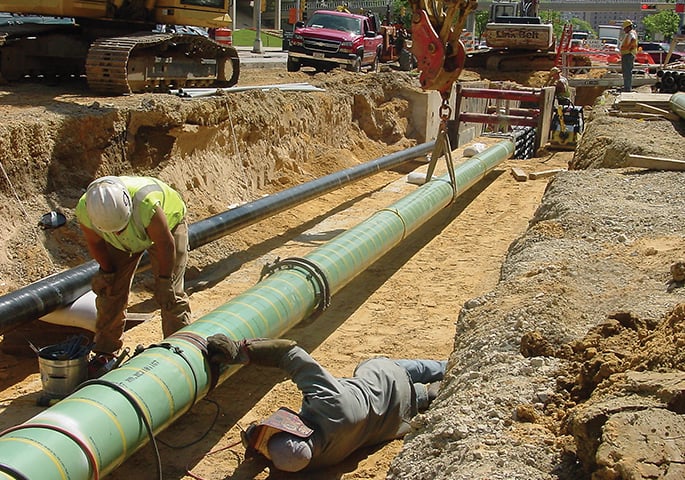A year ago, on December 7th, 2022, the Keystone Pipeline was shut down for months due to 13,000 barrels of crude oil unexpectedly spilling near Washington, Kansas. The spill sent shockwaves through the energy sector, underscoring the delicate balance between common industry practices and potential oversight in determining sustainable equipment. This pivotal moment raises questions about how much we really know about ensuring the structural integrity of major equipment and the necessity of advanced engineering tools to prevent such catastrophic events from happening again.
In this blog, we’ll explore the repercussions of the Keystone Pipeline shutdown and highlight the crucial role of Finite Element Analysis (FEA) software in preventing future disasters.
A Closer Look at the Shutdown
The Keystone Pipeline, a major oil transportation system spanning from Canada to the United States, faced unforeseen operational challenges leading to its shutdown. This incident reverberated across the energy landscape, impacting not only the oil and gas industry but also how engineers design, implement and validate equipment for safety.
In May of this year (2023), Celia Llopis-Jepsen from KCUR, Kansas City’s NPR station, reported on the shutdown, referencing the RCFA report from TransCanada. In summation, the pipeline was built with additional safety measures but still ruptured under much less pressure than it was designed to withstand.
And while investigators found gaps in the bend designs of the pipe, specifically pipes that were warped without proper repair, the spot that ruptured was ironically up to code. This raises concern about the validity of common industry practices that solely rely on code calculations.

DroneBase via AP
Code-Compliance or Bust?
Surprisingly, investigators found that the weld job, even at the particular rupture site, followed code. So what gives? Here’s what we know from the KCUR report:
- The piping was warped due to a less-than-perfect installation job (where the round pipe was squeezed into an oval component that created a “wrinkle” in one of the adjoining sections).
- In 2012, TC Energy discovered the pipe had been warped when it became increasingly hard to run cleaning and inspection tools through the pipeline.
- When they dug up the site, they found that the bend’s transitions were designed from thicker walls at the elbow to thinner walls for the adjoining pipes on either end, which might have increased the stress at the seams.
- Though the pipe was warped and the weld job was somewhat impractical, the entire component that ruptured was still considered code compliant by investigators.
So even if codes are followed to ensure systems are in safe working order, how can engineers, inspectors and quality control managers prevent a disaster like this from happening again? It’s clear. Some code calculations and common industry practices are just not enough.
With certain FEA technology that exists today, mitigating the numerous risk factors of preventing a leak or a rupture is not only more accurate but quicker in determining the actual sustainability of systems.
 Underground Construction, 2023 Gulf Publishing Holdings LLC
Underground Construction, 2023 Gulf Publishing Holdings LLC
The Role of FEA Software in Preventing Pipeline Failures
FEA software emerges as a powerful tool in preventing unforeseen pipeline failures and ensuring the structural integrity of critical infrastructure for code compliance against a variety of circumstances. Here’s how:
Drawing Tools for Compliant Modeling: In some FEA software like our FEPipe, certain modeling tools exist where engineers can modify standard models of bends to include additional supports, trunnions or other discontinuities that would not be covered in code calculations. Even warping and thinning can be modeled to verify if a replacement is warranted rather than installing and hoping for the best.
A Deeper, More Accurate Stress Analysis: FEA allows engineers to conduct detailed stress analyses on out-of-scope pipeline components. By simulating various loading conditions and design details, FEA can perform higher levels of assessments like protection from buckling, ratcheting evaluation and collapse analysis including nonlinear material models, which again, might not be addressed altogether with code calculations. This information allows engineers and inspectors to take proactive measures in strengthening the vulnerable sections.
Material Behavior Simulation: Understanding how different materials respond to different conditions is crucial for pipeline integrity. FEA software enables engineers to simulate linear-elastic and nonlinear material behavior under varying temperatures, pressures and environmental factors. This information is essential for design, predicting the fatigue life of components and implementing preventive maintenance strategies.
Predictive Maintenance: FEA supports high and low cycle fatigue analysis for any loading condition and can be used to make crack growth predictions in known flaws. This allows operators to schedule maintenance activities based on the actual condition of the infrastructure, reducing the risk of unplanned shutdowns and optimizing operational efficiency.
Piping System Model via FEPipe
Design for a Safer Tomorrow
Without question, the Keystone Pipeline shutdown serves as a stark reminder of the interconnectedness between the common practices and industry standards we follow and the advantages of current software capabilities that help us ensure the utmost safety for the equipment that impacts so many lives and societal operations. By leveraging FEA software and its capabilities, engineers can create more accurate designs that account for unforeseen stress conditions, identify vulnerabilities and even implement preventive measures to safeguard pipelines against unexpected challenges. As the energy industry continues to evolve, investing in cutting-edge technology becomes essential for maintaining the balance between insufficient industry practices and the responsibility we have in protecting ourselves, our employees and the life around us.
When code calculations aren’t enough, we are responsible for finding options that work. The FEA technology that exists today is at our disposal, and if we can learn anything from this spill, it's that there is no limit in preventative costs when human and environmental life are at stake.



Leave a Comment